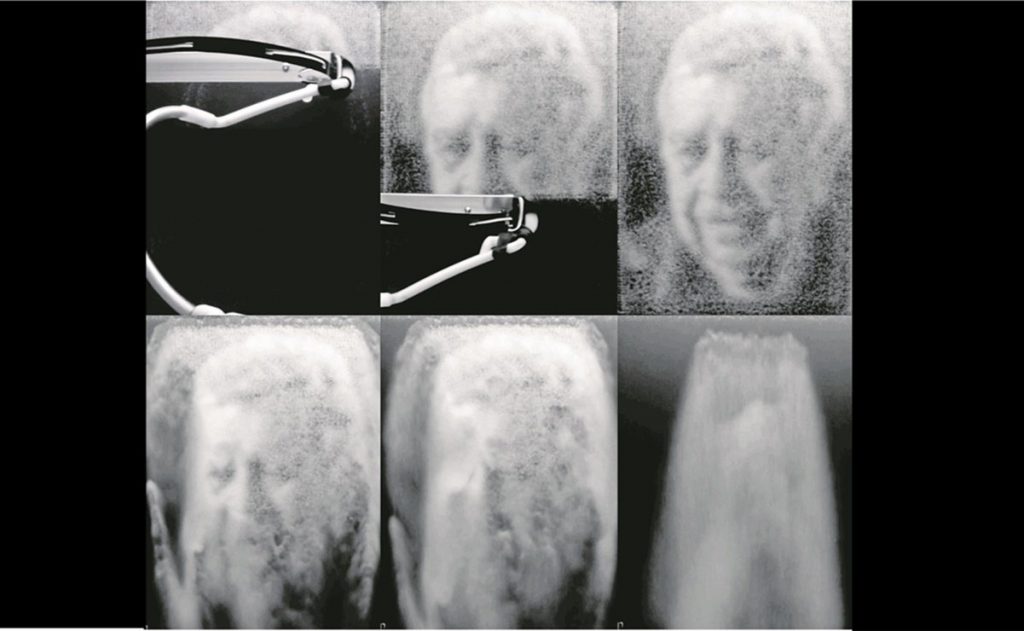The Covid Memorial from Lozano Hemmer to the Brooklyn Museum

The memorial to Covid-19 A Crack in the Hourglass opens Friday, October 29 at the Brooklyn Museum, having been revitalized in April 2020 at the University Museum of Contemporary Art (MUAC).
As at that time, the public is invited to submit photos of their loved ones who died from Covid-19 to the sites www.acrackinthehourglass.net www.acrackinthehourglass.net, accompanying photos with a personal dedication. Invitation is the ability to see them in person or live. The presentation at the Brooklyn Museum is the first work in the United States and is also the first live display of this piece. It indicates the possibility of a physical space for crying and collective crying.
The work operates from the fact that a robotic painter deposits hourglass grains onto a black stage and recreates the image of the deceased person. After completing each photo, gravity slowly erases the photo; The same sand in the next picture is recycled, thus forming an unlimited number of memorials; The work thus underscores the collective and ongoing nature of the epidemic.
Crack in the Hourglass describes not only the use of hourglass sand in the installation, but also our fractured sense of time during the pandemic, the museum describes in a statement. The process and images are archived on the project website, where previous interventions can be viewed.
“Commissioned by Cuauhtémoc Medina for MUAC in Mexico City as an online mourning platform, the piece becomes an installation with photos made so far, videos in process, and the real machine that paints are the images of the victims in hourglass sand,” the artist describes on Networks his social networking.
We hope it will create a much-needed space for venting, as well as a conversation about how to celebrate the impact of COVID-19 around the world. While the pandemic has deepened existing inequalities in terms of race, class, disability, and nationality, “Crack in the Hourglass” rallies society around collective care and grief.” The Brooklyn Museum Team.
“This project was designed to mourn our losses at a time when we were socially distant and deprived of closeness to those affected. The piece also represents continuity, as the sand itself is used to make unique, endless images,” expressed artist Rafael Lozano Heimer. He added that he was keen to see how the project was received in New York, one of the epicenters of the pandemic, and grateful to the Brooklyn Museum for bringing it to the United States.

“Future teen idol. Hardcore twitter trailblazer. Infuriatingly humble travel evangelist.”




:quality(85)/cloudfront-us-east-1.images.arcpublishing.com/infobae/BNGH73UCKQAZSQPCODUWO2BE5Y.jpg)





